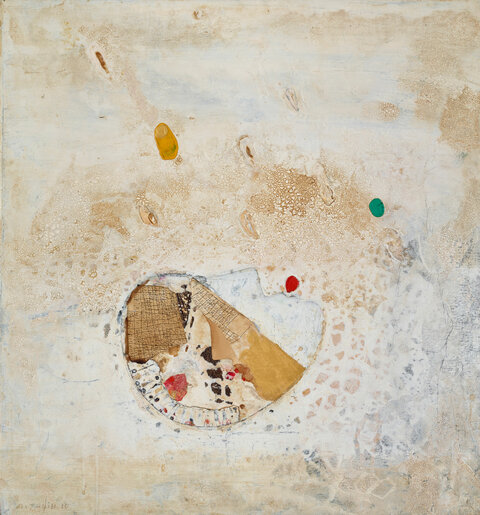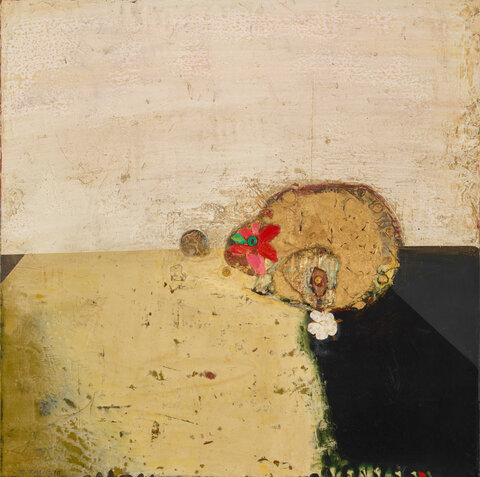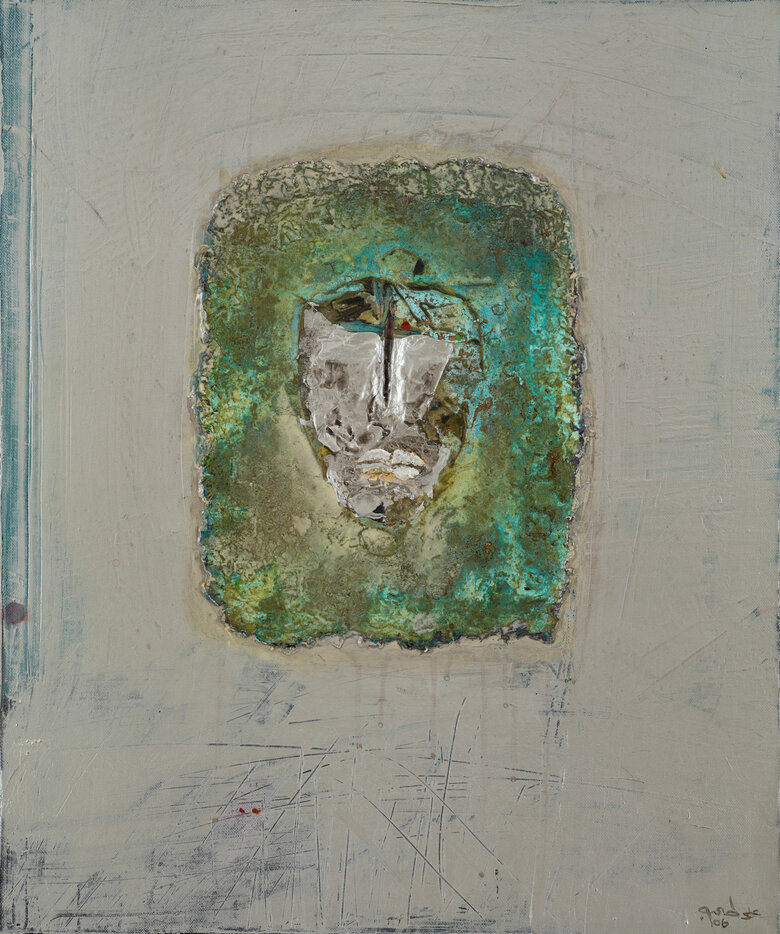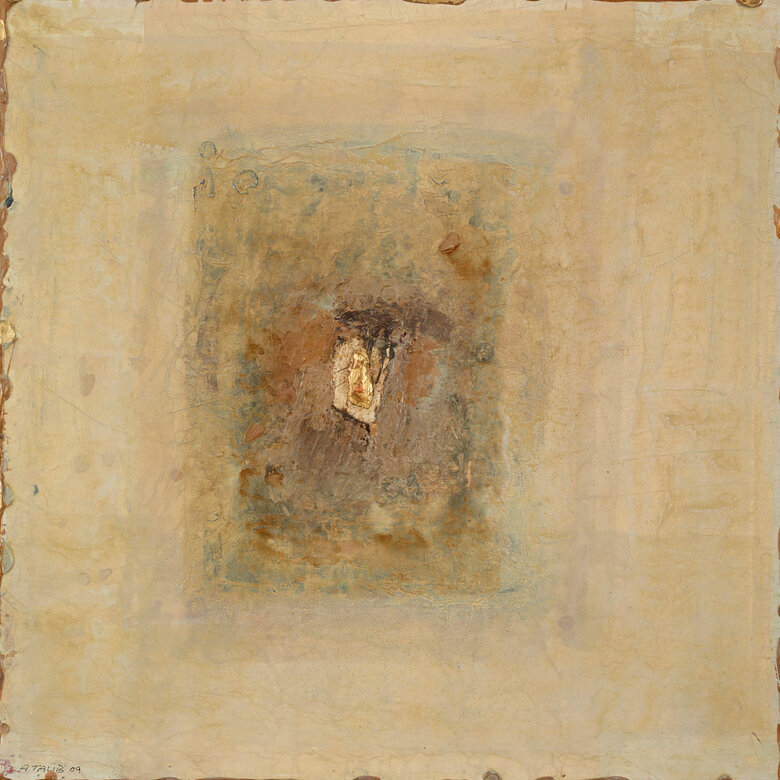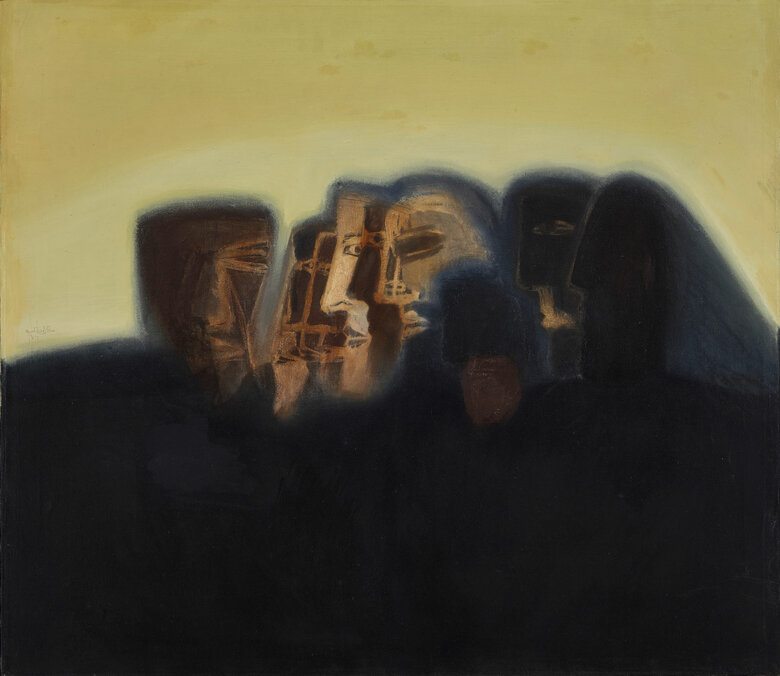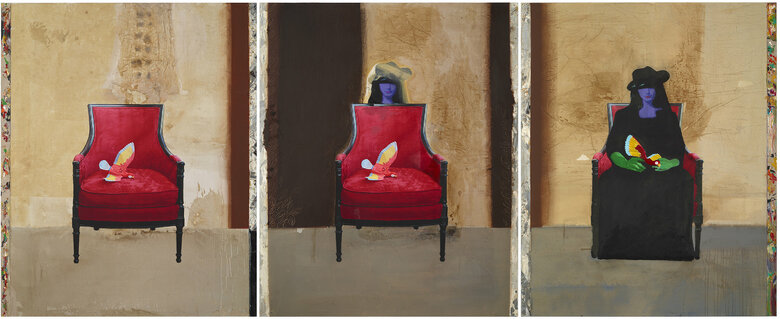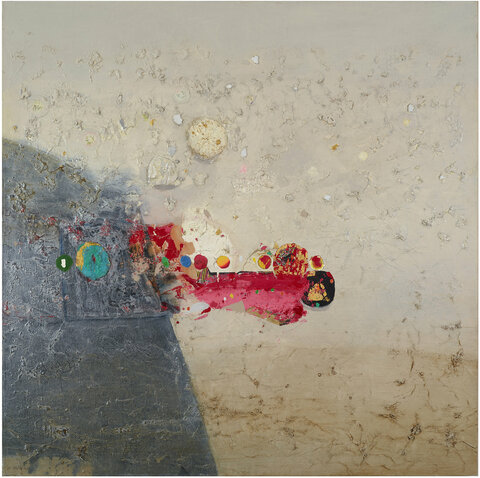Untitled, 2010 is an abstract painting that captures the viewer’s attention with its muddied white background and a washed underlayer of powder blue and ochre brown paint. In the lower register of the painting’s squarish shape lies a collaged figure, resembling the profile of a human head, suspended horizontally, facing upwards. Surrounding it are rough, thick blotches and crater-like indentations created through a masterful interplay of light and thick impasto paint. Such a technique lends the painting its tactile quality. Three tiny ellipses above the head interrupt the painting’s tranquil background: one painted in green on the upper right side of the canvas, another in mustard yellow placed on the upper left, and lastly, a crimson-red spot that looks like a blood drop on the lips of the face.
The painting’s focal point is the collaged figure – the ‘profile of a human head’. The artist built up this figure using cutout cardboard and pieces of old paper. Looking closer, we notice two adjacent faces in profile, opposite each other, enclosed within the more significant ‘head’. One looks masculine, and the other feminine. The masculine profile shapes the facial contour of the more oversized ‘head’; it has a bulky jawline and tight lips. The feminine profile points inwards, within the head; it presents a more-rounded jawline and bulbous lips punctuated with two striking red spots. This contrasting inner profile gives the composition a sense of depth and dimension. The gold brushstrokes, from the chin area up to the cheek, painted on the old cardboard, create a strong visual contrast with the powder blue tones of the masculine profile. In the upper part of the feminine profile and the main head is a gridded sheet of paper with burnt edges inscribed with numbers in fraction form.
This artwork is a perfect representation of the style of the artist Ali Talib. As a contemporary Iraqi artist, he has advocated for artistic innovation characterized by his freedom to experiment with different mediums. This is a viewpoint he shared with his fellow Innovationists. Talib also co-founded the Shadow Group, which believes that art is a reflection, or a ‘shadow’, of life. Talib’s use of multiple materials, contrasting vivid and subdued tones, intricate metaphorical patterns, and fragmented body parts enables him to communicate various emotions. His art becomes the shadow in depicting his reality of complex struggles endured in childhood and war.
Talib’s philosophy permeates this artwork, as his subject matter is a dichotomy of the inner and outer self, demonstrated through his technical treatment of a subdued yet striking background. Infused with earthy tones, the background in Untitled, 2010, becomes a metaphor for an arid and perhaps tainted terrain. The artist speckles the surface with vivid and forceful blotches of red, yellow, and green, which draws our attention to the contrast between the calm and the bright. The solitary head evokes a feeling of loneliness and estrangement in an unknown place, and the absence of a body adds to this sense of uneasiness.
The opposite faces and the contrast between the gold and blue powder hues convey a sense of internal conflict or dialogue. Different size brushstrokes mimic the movement of a spoken thought – pain encapsulated in the ruby red paint. Furthermore, Talib’s depiction of the brain in gridded numbers, serving as a universal language transcending cultural barriers, invites viewers to consider the shared emotions of human existence and internal fragmentation. Finally, the burnt papers and gold paint in Talib’s artwork symbolize the enduring aspects of human experience, including the perseverance of collective memory in the face of erasure.
In conclusion, Ali Talib’s Untitled, 2010, is a profound reminder of the self. By creating emotionally powerful and visually stunning art, Talib invites viewers to contemplate the complex and often painful experiences that arise in the aftermath of conflict. In addition, Talib highlights the duality of our inner minds, existing as dichotomies of masculine and feminine, outspoken and silenced. Ultimately, Talib’s artwork encourages us to confront the fragmented inner workings of our minds and our emotional struggles while recognizing how they shape our individual and collective identities.


